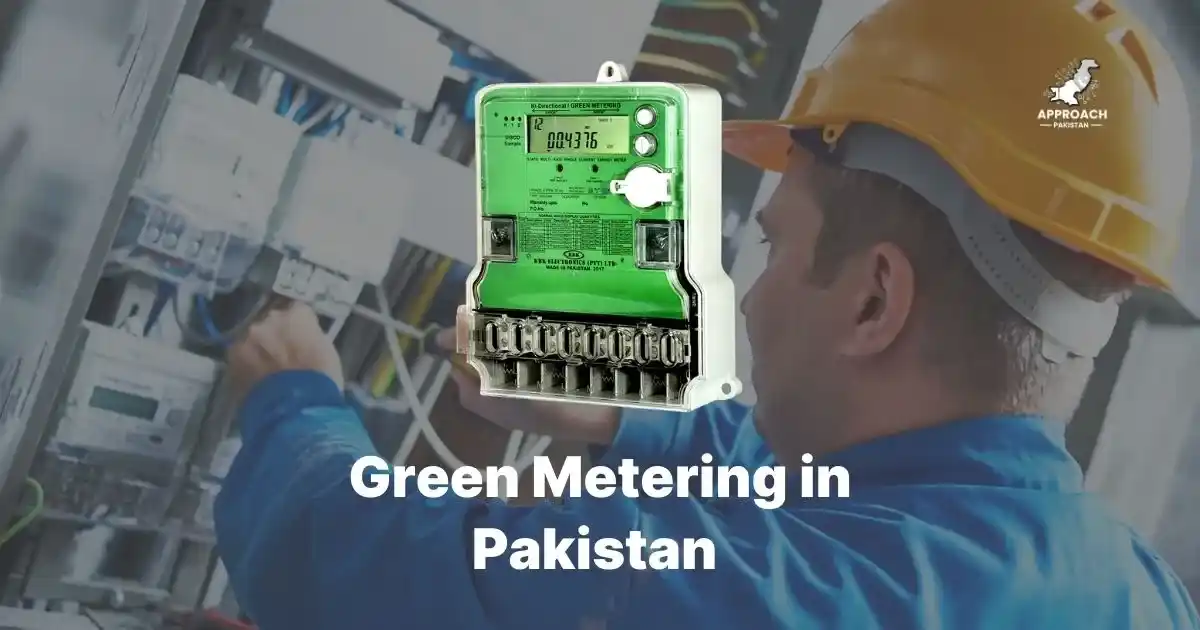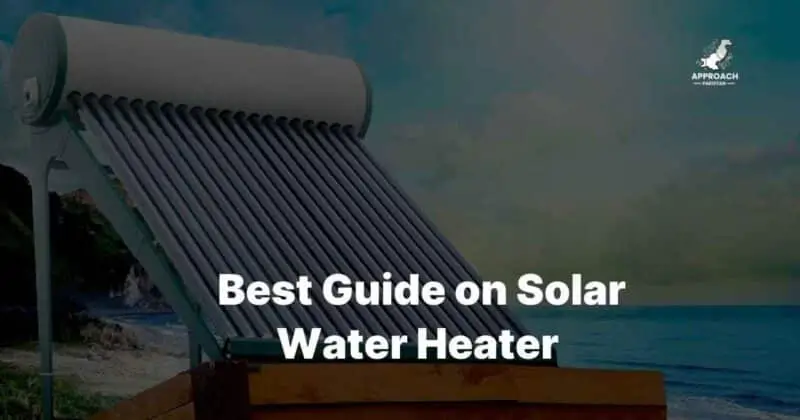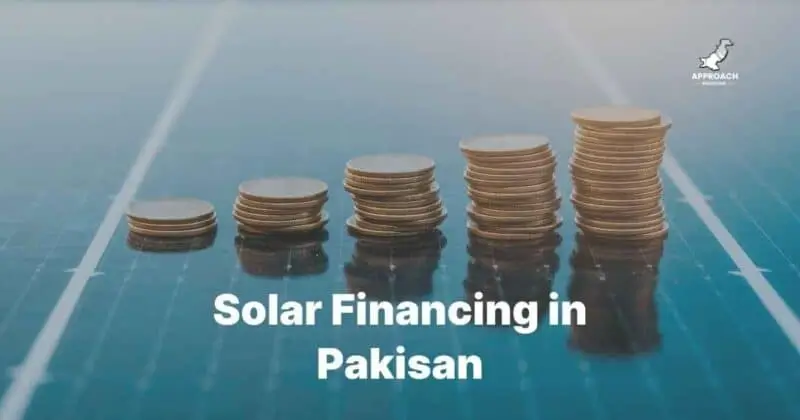Green Meter Price in Pakistan | Net Metering in Pakistan

Green meter prices in Pakistan range from PKR 105,000 to PKR 150,000 for complete installation in 2025. The device itself costs PKR 40,000, while documentation, processing, and setup fees add PKR 65,000-110,000. Current NEPRA tariff rates are Rs. 19.32/kWh for exported electricity.
Are you tired of electricity bills that drain your monthly budget like a leaky bucket? Picture this: your neighbor just cut their electricity bill by 80% while you’re still paying sky-high rates for unreliable power supply.
The solution isn’t magic – it’s a green meter. This small device transforms your home into a mini power plant, letting you sell excess solar electricity back to the national grid.
Many Pakistani families struggle with the same pain points you face. Load shedding disrupts daily routines. Hidden costs make solar investments scary. Confusing technical jargon leaves you wondering if you’re making the right choice.
But here’s the good news: green meters offer energy independence from Pakistan’s unreliable grid. You’ll get transparent pricing, professional installation, and clear payback periods. Most importantly, you’ll join thousands of Pakistani homeowners who’ve already slashed their electricity costs.
What is a Green Meter (Net Meter)?
A green meter is a bi-directional electricity meter that measures both electricity consumption from the grid and excess solar power fed back to it. Unlike regular meters that only record consumption, green meters run backwards when your solar panels produce more electricity than you use.
Think of it like a bank account for electricity. During sunny days, your solar panels deposit extra units. At night or cloudy days, you withdraw those units from your “electricity bank.”
The technical term is “net metering” – you only pay for the “net” difference between what you consume and what you produce. If you produce more than you consume, the electricity company pays you.
Current Market Overview
Pakistan’s green meter market has exploded in 2025. Rising electricity tariffs pushed more families toward solar solutions. The government’s continued support for renewable energy made green meters more accessible.
Key market drivers include:
- Electricity prices increasing 40% in the last two years
- Improved solar panel affordability
- NEPRA’s streamlined approval process
- Growing awareness about energy independence
2025 Price Trends and Predictions
Green meter prices have stabilized in 2025 after fluctuations in previous years. Component costs decreased due to local manufacturing. However, installation charges increased due to higher labor costs.
Expected trends for late 2025:
- Device prices may drop 5-10% due to competition
- Installation costs likely to remain stable
- Documentation fees might increase with inflation
- Overall investment still highly profitable
Complete Green Meter Pricing Breakdown
Here’s the honest truth about green meter costs – no hidden surprises.
Green Meter Device Cost (PKR 40,000)
| Meter Type | Brand | Price Range | Features |
| Single Phase | Local | PKR 35,000-40,000 | Basic bi-directional |
| Three Phase | Imported | PKR 40,000-45,000 | Advanced features |
| Smart Meter | Premium | PKR 45,000-50,000 | Remote monitoring |
The meter itself isn’t the biggest expense. Installation and paperwork add significant costs.
Installation and Setup Charges
| Service | Cost Range | Details |
| Electrical Work | PKR 15,000-25,000 | Wiring, safety switches |
| Labor Charges | PKR 10,000-15,000 | Professional installation |
| Safety Equipment | PKR 5,000-10,000 | Breakers, fuses |
| Testing & Commissioning | PKR 3,000-5,000 | System verification |
Documentation and Processing Fees
| Document/Process | Cost | Processing Time |
| NEPRA Application | PKR 5,000-8,000 | 2-3 weeks |
| NOC from Energy Dept | PKR 10,000-15,000 | 1-2 weeks |
| AEDB Certification | PKR 20,000-25,000 | 3-4 weeks |
| Three-phase Connection | PKR 25,000-35,000 | 1-2 weeks |
Total Investment Analysis (PKR 105,000 – 150,000)
| Component | Minimum Cost | Maximum Cost | Average Cost |
| Green Meter Device | PKR 35,000 | PKR 50,000 | PKR 40,000 |
| Installation | PKR 30,000 | PKR 50,000 | PKR 40,000 |
| Documentation | PKR 40,000 | PKR 50,000 | PKR 45,000 |
| Total Investment | PKR 105,000 | PKR 150,000 | PKR 125,000 |
Cost Comparison: 2024 vs 2025
| Cost Component | 2024 Price | 2025 Price | Change |
| Green Meter | PKR 45,000 | PKR 40,000 | -11% |
| Installation | PKR 35,000 | PKR 40,000 | +14% |
| Documentation | PKR 40,000 | PKR 45,000 | +12% |
| Total | PKR 120,000 | PKR 125,000 | +4% |
Net Metering Tariff Rates 2025
Current NEPRA Tariff: Rs. 19.32/kWh
NEPRA sets the rate at which electricity companies buy your excess solar power at Rs. 19.32 per kilowatt-hour. This rate applies to all net metering customers across Pakistan, regardless of their electricity distribution company (LESCO, MEPCO, KE, etc.).
This rate represents about 80% of the average retail electricity price. While you pay retail rates for electricity you consume, you receive this slightly lower rate for electricity you export.
Peak vs Off-Peak Rate Structure
| Time Period | Import Rate | Export Rate | Hours |
| Peak Hours (Summer) | PKR 24.33/kWh | PKR 19.32/kWh | 6 PM – 10 PM |
| Off-Peak Hours | PKR 14.00/kWh | PKR 19.32/kWh | All other times |
| Peak Hours (Winter) | PKR 22.00/kWh | PKR 19.32/kWh | 6 PM – 10 PM |
The beauty of this structure? You often export electricity during off-peak hours (when rates are lower) but get paid the same export rate regardless of timing.
Import/Export Rate Differentials
Here’s where the math gets interesting:
Off-Peak Scenario:
- You import electricity at PKR 14/kWh
- You export electricity at PKR 19.32/kWh
- Net benefit: PKR 5.32/kWh
Peak Hour Scenario:
- You import electricity at PKR 24.33/kWh
- You export electricity at PKR 19.32/kWh
- Net cost: PKR 5.01/kWh
Quarterly Billing Mechanism
Your electricity company calculates your net metering bill every three months. Here’s how it works:
- Annual Reset: Any remaining credits reset at year-end
- Monthly Tracking: Units imported and exported are recorded monthly
- Quarterly Settlement: After 3 months, total imports minus total exports
- Billing Options: Pay remaining balance or carry forward credits
Green Meter Types and Specifications
Bi-directional vs Uni-directional Meters
Bi-directional meters measure electricity flow in both directions – to and from the grid. Uni-directional meters only measure consumption in one direction. For net metering, you must install a bi-directional meter to track both electricity imports and exports.
| Feature | Bi-directional | Uni-directional |
| Measures Import | ✓ | ✓ |
| Measures Export | ✓ | ✗ |
| Net Metering Compatible | ✓ | ✗ |
| Price | PKR 40,000+ | PKR 15,000+ |
Three-Phase vs Single-Phase Requirements
All green meter installations in Pakistan require three-phase connections, regardless of your current connection type. If you have a single-phase connection, you must upgrade to three-phase before installing a green meter.
| Connection Type | Green Meter Eligible | Upgrade Cost | Processing Time |
| Single Phase | No | PKR 25,000-35,000 | 2-3 weeks |
| Three Phase | Yes | No upgrade needed | N/A |
This requirement often surprises homeowners. Budget for the three-phase upgrade if you currently have single-phase connection.
Technical Specifications and Features
| Specification | Standard Requirement | Premium Features |
| Voltage Rating | 230/400V | Same |
| Current Rating | 5-100A | Smart monitoring |
| Accuracy Class | 1.0 | 0.5S |
| Communication | Basic display | WiFi/GSM |
| Data Storage | 35 days | 2+ years |
Brand Comparison and Recommendations
| Brand | Origin | Price Range | Reliability | Warranty |
| Hexing | China | PKR 35,000-40,000 | High | 3 years |
| Wasion | China | PKR 38,000-42,000 | High | 5 years |
| Local Brands | Pakistan | PKR 32,000-38,000 | Medium | 2 years |
Step-by-Step Application Process for Net Metering
Pre-Application Requirements
Before starting your green meter application, ensure you have:
- Active three-phase electricity connection
- Installed solar system (minimum 1kW capacity)
- Clear property ownership documents
- Recent electricity bills (last 3 months)
If you’re missing any of these, complete them first. The application will be rejected otherwise.
Documentation Checklist
| Document | Purpose | Where to Obtain |
| CNIC Copy | Identity verification | NADRA |
| Property Documents | Ownership proof | Revenue Department |
| Electricity Bills | Connection history | Your DISCO |
| Solar System Certificate | Installation proof | AEDB certified installer |
| NOC Application | Permission request | Energy Department |
Keep multiple copies of each document. Government offices often keep originals.
NEPRA Application Procedure
The NEPRA application involves submitting technical drawings, system specifications, and installation certificates through an AEDB-registered solar company. Individual consumers cannot apply directly to NEPRA – you must work through certified installers.
Step-by-step process:
- Choose AEDB-registered installer
- Installer prepares technical documentation
- Submit application to local energy department
- Energy department inspection
- Forward approved application to NEPRA
- NEPRA issues generation license
Timeline and Processing Duration (4-8 weeks)
| Stage | Duration | Potential Delays |
| Document Preparation | 1 week | Missing paperwork |
| Energy Dept Review | 2-3 weeks | High application volume |
| Technical Inspection | 1 week | Scheduling conflicts |
| NEPRA License | 2-3 weeks | Technical issues |
Total realistic timeline: 6-8 weeks
Common Approval Delays and Solutions
The most common delay is incomplete documentation, accounting for 60% of application rejections. Double-check all paperwork before submission and work with experienced installers who know the process inside out.
Top delay causes:
- Incorrect application forms – Use latest NEPRA formats
- Incomplete technical drawings – Use certified electrical engineers
- Wrong meter specifications – Verify compatibility first
- Missing safety certifications – Complete all inspections
Eligibility Criteria and Requirements
Minimum Solar System Capacity (1kW-1000kW)
You need at least 1kW solar system capacity to qualify for green meter installation. The maximum allowed capacity is 1000kW, though residential systems typically range from 3kW to 20kW.
| System Size | Suitable For | Typical Monthly Generation |
| 1-3kW | Small homes | 150-450 units |
| 3-5kW | Medium homes | 450-750 units |
| 5-10kW | Large homes | 750-1500 units |
| 10kW+ | Commercial | 1500+ units |
Most families choose 5kW systems as the sweet spot between cost and electricity generation.
Three-Phase Connection Mandate
This requirement trips up many applicants. NEPRA mandates three-phase connections for several reasons:
- Grid stability – Better load distribution
- Safety standards – Reduced electrical hazards
- Technical compatibility – Proper solar inverter function
- Billing accuracy – Precise import/export measurement
Sanctioned Load Limitations
Your solar system capacity cannot exceed 1.5 times your sanctioned load. For example, if your sanctioned load is 5kW, your maximum solar system size is 7.5kW.
| Sanctioned Load | Maximum Solar System | Green Meter Compatible |
| 3kW | 4.5kW | Yes |
| 5kW | 7.5kW | Yes |
| 7kW | 10.5kW | Yes |
| 10kW+ | 15kW+ | Yes |
Consumer Category Classifications
NEPRA allows green meters for multiple consumer categories:
| Category | Eligibility | Special Requirements |
| Residential | Yes | Standard process |
| Commercial | Yes | Higher documentation |
| Industrial | Yes | Complex approval |
| Agricultural | Yes | Subsidy programs |
Installation Process and Technical Requirements
Solar System Integration
Your solar system must be properly integrated with the green meter through a bi-directional inverter and appropriate safety equipment. The inverter converts DC solar power to AC power that matches grid specifications.
Key integration components:
- Grid-tie inverter – Converts and synchronizes power
- AC disconnect switch – Safety isolation
- Production meter – Tracks solar generation
- Safety breakers – Overload protection
If you’re planning to install solar panels and need guidance on system sizing, understand how many solar panels are required for different loads to make an informed decision about your green meter application.
Electrical Safety Standards
Pakistan follows international electrical safety standards for green meter installations:
| Safety Requirement | Standard | Purpose |
| Earthing System | IEEE 142 | Electrical safety |
| Circuit Protection | IEC 60364 | Overload prevention |
| Isolation Switches | IEC 60947 | Maintenance safety |
| Surge Protection | IEEE C62.41 | Equipment protection |
Grid Connection Specifications
Your system must meet strict grid connection requirements:
- Voltage regulation – Within ±5% of nominal
- Frequency control – 50Hz ±0.5Hz
- Power factor – Above 0.95
- Harmonic distortion – Below 5%
Inspection and Certification
Two separate inspections are required:
- Energy Department Inspection – Safety and compliance
- DISCO Technical Inspection – Grid compatibility
Both must pass before meter activation.
Bill Calculation and Reading Guide
Understanding Green Meter Readings (6,7,8,9)
Your green meter displays four key readings numbered 6, 7, 8, and 9. Reading 6 shows peak hour imports, 7 shows peak hour exports, 8 shows off-peak imports, and 9 shows off-peak exports.
| Reading Number | Description | Rate Applied |
| 6 | Peak Import | PKR 24.33/kWh |
| 7 | Peak Export | PKR 19.32/kWh |
| 8 | Off-Peak Import | PKR 14.00/kWh |
| 9 | Off-Peak Export | PKR 19.32/kWh |
Peak Hour Billing (6 PM – 10 PM)
Peak hours typically occur when solar generation is minimal. Most energy consumption during peak hours comes from the grid or battery backup.
Peak Hour Calculation:
- Import units × PKR 24.33 = Import cost
- Export units × PKR 19.32 = Export credit
- Net peak cost = Import cost – Export credit
Off-Peak Hour Calculations
This is where green meters shine financially. Solar generation often exceeds consumption during off-peak hours.
Off-Peak Calculation:
- Import units × PKR 14.00 = Import cost
- Export units × PKR 19.32 = Export credit
- Net off-peak result = Import cost – Export credit (often negative = credit)
Net Bill Computation Examples
Example 1: Typical Monthly Bill
| Period | Import | Export | Rate | Cost/Credit |
| Peak | 50 units | 5 units | 24.33/19.32 | PKR 1,120 |
| Off-Peak | 100 units | 200 units | 14.00/19.32 | PKR -2,464 |
| Net Bill | PKR -1,344 |
Result: PKR 1,344 credit carried forward!
To fully understand the application process and requirements, explore our detailed guide on how to apply for net metering that covers additional steps and documentation requirements.
Net Metering Benefits and Challenges
Economic Advantages
Green meters transform electricity from an expense into an investment:
- Immediate bill reduction – Start saving from month one
- Inflation hedge – Solar generation value increases with electricity rates
- Passive income potential – Earn credits during high generation months
- Minimal maintenance costs – Solar systems require little upkeep
Environmental Impact
Each green meter installation contributes to Pakistan’s environmental goals:
- Carbon reduction – Average 3-5 tons CO2 saved annually
- Air quality improvement – Reduced fossil fuel dependence
- Renewable energy growth – Supporting Pakistan’s green energy targets
- Local environmental benefits – Cleaner neighborhoods and cities
Grid Stability Contribution
Green meters help Pakistan’s electrical grid in multiple ways:
- Peak load reduction – Solar generation during high-demand periods
- Voltage regulation – Distributed generation improves grid stability
- Transmission loss reduction – Local generation reduces long-distance power transmission
- Grid resilience – Multiple small generators are more reliable than few large ones
Potential Limitations and Solutions
Common challenges include initial high costs, weather dependency, and regulatory complexity. However, financing options, battery backup systems, and experienced installers can address these concerns effectively.
| Challenge | Impact | Solution |
| High upfront cost | Delayed adoption | Financing options available |
| Weather dependency | Variable generation | Battery backup systems |
| Complex paperwork | Installation delays | Use experienced installers |
| Technical issues | System downtime | Quality equipment + warranties |
For families concerned about Pakistan’s energy crisis, learn why solar energy is the solution for Pakistan and how green meters fit into the broader renewable energy strategy.
Economic Advantages
Common Issues and Solutions
The most frequent green meter problems include communication errors, inaccurate readings, and billing discrepancies. Most issues resolve through simple troubleshooting steps or professional technical support.
| Problem | Symptoms | Solution |
| No display | Blank meter screen | Check power connections |
| Wrong readings | Inconsistent numbers | Professional calibration |
| Communication error | No data transmission | Network troubleshooting |
| Billing errors | Incorrect calculations | Contact DISCO billing |
Maintenance Requirements
Green meters require minimal maintenance:
- Monthly visual inspection – Check for physical damage
- Quarterly cleaning – Remove dust and debris
- Annual professional check – Verify accuracy and connections
- 5-year calibration – Mandatory accuracy verification
Warranty and Support Services
| Service Type | Duration | Coverage | Cost |
| Manufacturer Warranty | 3-5 years | Defects and failures | Free |
| Installation Warranty | 1-2 years | Workmanship | Free |
| Extended Warranty | 2-5 years | Additional coverage | Paid |
| Technical Support | Ongoing | Phone/email support | Usually free |
When selecting installers, research the top 10 solar companies in Pakistan to ensure you’re working with reputable providers who offer comprehensive warranty coverage.




